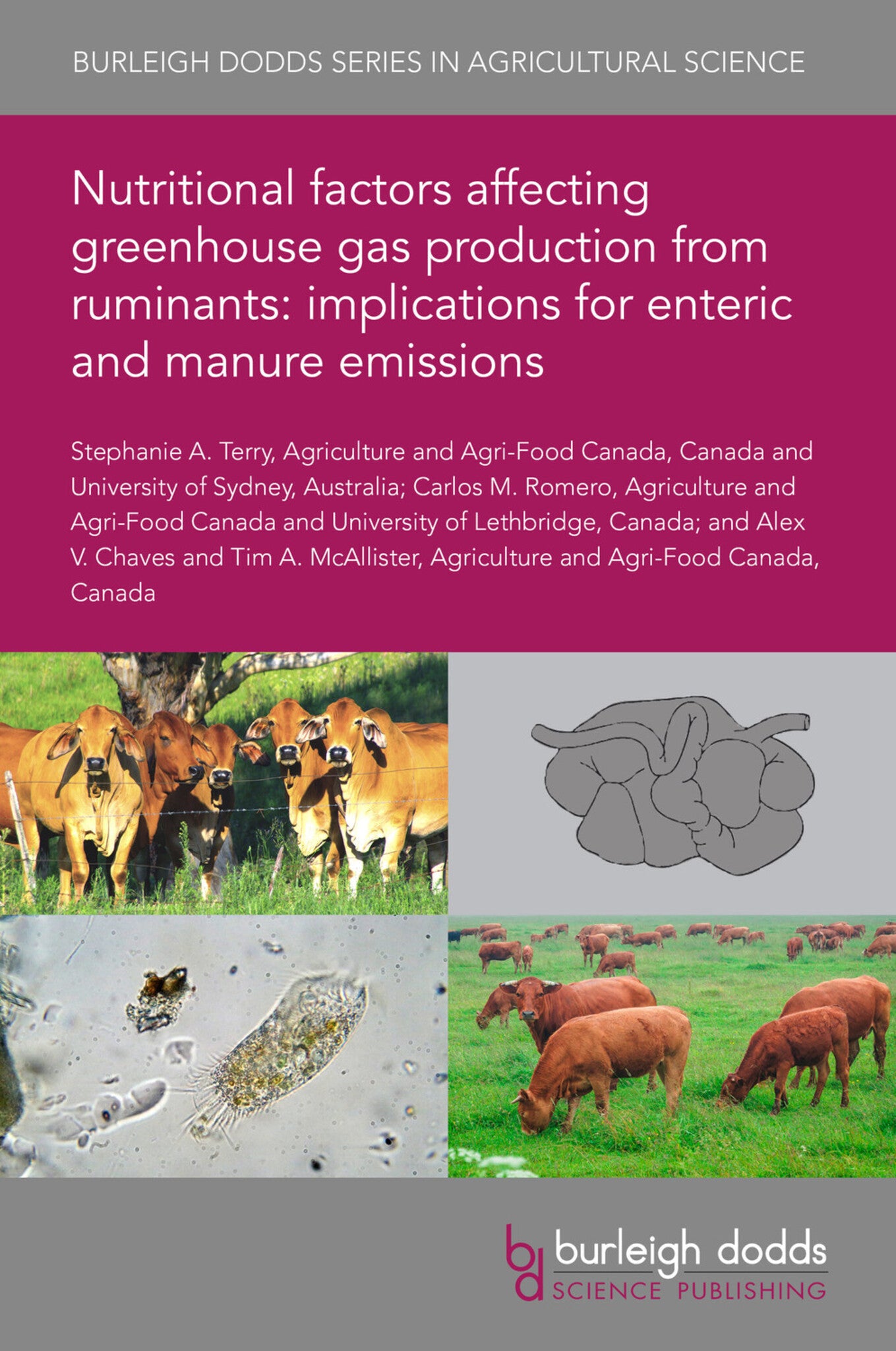We're sorry. An error has occurred
Please cancel or retry.
Nutritional factors affecting greenhouse gas production from ruminants: implications for enteric and manure emissions
Regular price
£25.00
Sale price
£25.00
Regular price
£25.00
Unit price
/
per
Sale
Sold out
Re-stocking soon
Ruminants are significant contributors to global greenhouse gas (GHG) emissions. Mitigating enteric and manure methane (CH4) production have been explored, but often in isolation of other GHG. Lowe...
Read More

Some error occured while loading the Quick View. Please close the Quick View and try reloading the page.
Couldn't load pickup availability
- Format:
-
22 June 2020

Ruminants are significant contributors to global greenhouse gas (GHG) emissions. Mitigating enteric and manure methane (CH4) production have been explored, but often in isolation of other GHG. Lowering enteric CH4 emissions can cause unintended increases in GHG from manure. Considering the complexity of rumen and the impact that it can have on manure composition, a whole systems approach is required to assess the value of additives that mitigate enteric CH4 emissions. This chapter summarizes a range of nutritional strategies available for enteric- and manure-CH4 abatement. Dietary additives including alternative electron acceptors, inhibitors, plant secondary compounds, and carbon (C) derived materials will be reviewed for their efficacy as mitigants of overall GHG emissions and evaluated for how they alter rumen and manure microbiomes. A compilation of current research will identify gaps in knowledge and reinforce the need to further examine dietary mitigation strategies in ruminant production systems at a whole farm level.

Price: £25.00
Publisher: Burleigh Dodds Science Publishing
Imprint: Burleigh Dodds Science Publishing
Series: Burleigh Dodds Series in Agricultural Science
Publication Date:
22 June 2020
ISBN: 9781786768049
Format: eBook
BISACs:
TECHNOLOGY & ENGINEERING / Agriculture / Animal Husbandry, Dairy farming, TECHNOLOGY & ENGINEERING / Agriculture / Sustainable Agriculture, Sustainable agriculture, Animal husbandry

- 1 Introduction
- 2 Case study: Dried distillers grains plus solubles (DDGS)
- 3 Nitro-based compounds
- 4 Plant secondary compounds
- 5 Carbon-derived materials
- 6 Microbial hydrogen utilisation
- 7 Future trends and conclusion
- 8 Where to look for further information
- 9 References



